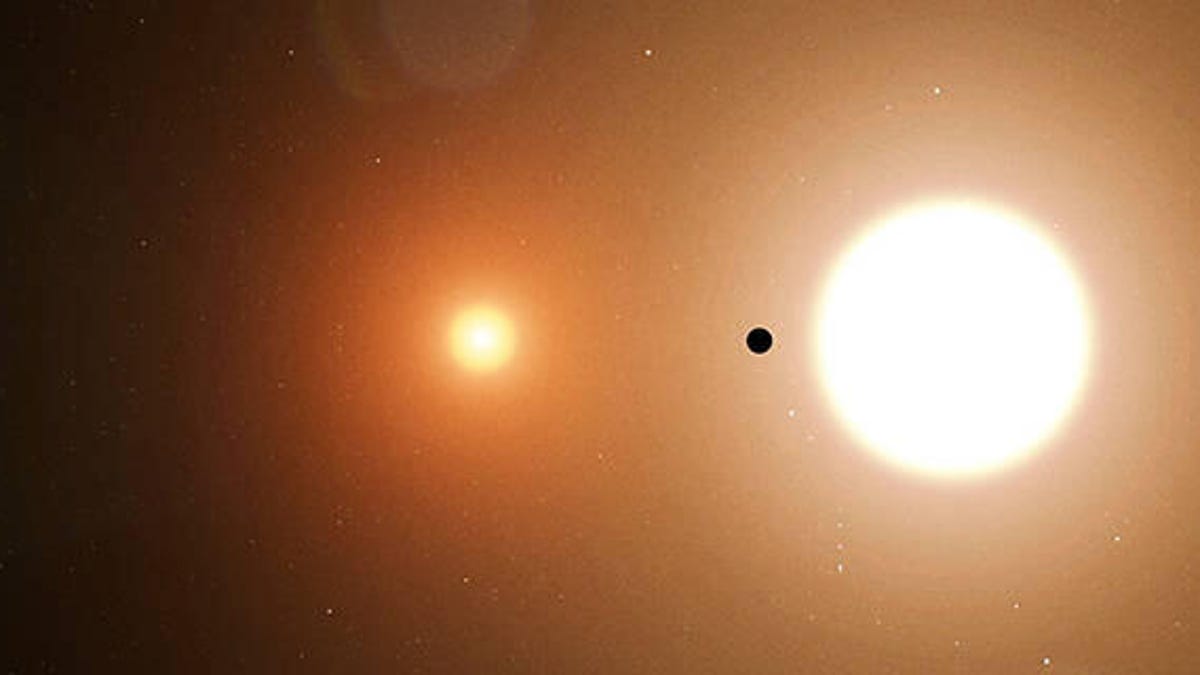On this real-life Tatooine spotted by NASA, the views are amazing
Planet hunter TESS has discovered its first world orbiting a pair of suns.

TOI 1338 b is silhouetted by its host stars.
Imagine a world with two suns like the fabled, fictional home of the Skywalker clan from Star Wars. But this planet is oriented just right so it has a view of one sun eclipsing the other every 15 days.
NASA's newest planet-hunting satellite TESS has just spotted an exoplanet with these characteristics, though it's not likely to be a clone of Tatooine -- the dry, sandy and rocky world where George Lucas began his decades-running space epic.
The planet carries the less memorable moniker TOI 1338 b, and it's the first planet circling a binary star (or circumbinary) system discovered by the Transiting Exoplanet Survey Satellite, aka TESS. It weighs in at around seven times the size of Earth, making it closer to the size of Saturn and therefore more likely to be an uninhabitable gas giant than a place hosting sneaky Jawas and other desert dwellers.
The planet was discovered with the help of high school intern Wolf Cukier, who spent this past summer examining oddly behaving stars in TESS data at NASA's Goddard Space Flight Center in Greenbelt, Maryland.
"About three days into my internship, I saw a signal from a system called TOI 1338. At first I thought it was a stellar eclipse, but the timing was wrong. It turned out to be a planet," Cukier said in a statement Monday.
The two stars making up TOI 1338 can be found in the constellation Pictor, which is shaped like an easel, about 1,300 light-years away from us. The duo orbit each other every 15 days, and because the lone known exoplanet in the system is aligned in the same plane as the two stars, it enjoys an eclipse each time the stars pass one another.
Binary stars are relatively common in the Milky Way, but the first planet orbiting such a system wasn't seen until 2011. Most planets found in binary systems are gas giants, but recent research has suggested that more Earth-like, rocky planets around binaries could be good candidates in the search for extraterrestrial life. Failing that, circumbinary gas giants might host rocky exo-moons that are more hospitable.
Bottom line: Sooner or later we'll likely find a real Tatooine and it might not even be in a galaxy far, far away.
Originally published Jan. 7, 9:49 a.m. PT.

